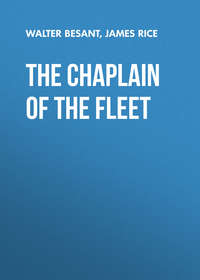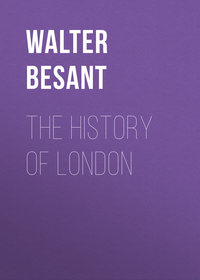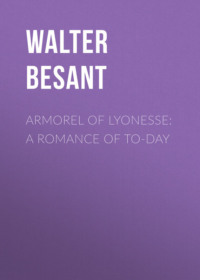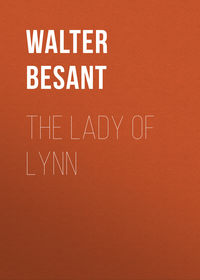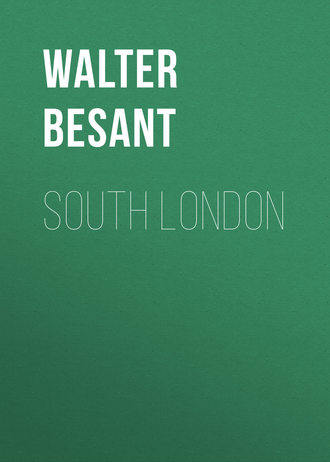 полная версия
полная версияSouth London
On November 26, 1697, after the Peace of Ryswick, William the Third made a triumphant entry into London:
'He came from Greenwich about ten o'clock, in his coach, with Prince George and the Earl of Scarbrough, attended by four score other coaches, each drawn by six horses. The Archbishop of Canterbury came next to the King, the Lord Chancellor after him, then the Dukes of Norfolk, Devon, Southampton, Grafton, Shrewsbury, and all the principal noblemen. Some companies of Foot Grenadiers went before, the Horse Grenadiers followed, as did the Horse Life-Guards and some of the Earl of Oxford's Horse; the Gentlemen of the Band of Pensioners were in Southwark, but did not march on foot; the Yeomen of the Guard were about the King's coach.
'On St. Margaret's Hill in Southwark the Lord Mayor met his Majesty, where, on his knees, he delivered the sword, which his Majesty returned, ordering him to carry it before him. Then Mr. Recorder made a speech suitable to the occasion, after which the cavalcade commenced.
'A detachment of about one hundred of the City Trained Bands, in buff coats and red feathers in their hats, preceded; then followed two of the King's coaches, and one of Prince George's; then two City Marshals on horseback, with their six men on foot in new liveries; the six City Trumpets on horseback; the Sheriff's Officers on foot with their halberds and javelins in their hands; the Lord Mayor's Officers in black gowns; the City Officers on horseback, each attended by a servant on foot, viz.: the four Attorneys, the Solicitor and Remembrancer, the two Secondaries, the Comptroller, the Common Pleaders, the two Judges, the Town Clerk, the Common Serjeant, and the Chamberlain. Then came the Water Bailiff on horseback, carrying the City banner; the Common Crier and the Sword-bearer, the last in his gown of black damask and gold chain; each with a servant; then those who had fined for Sheriffs or Aldermen, or had served as such, according to their seniority, in scarlet, two and two, on horseback; the two Sheriffs on horseback, with their gold chains and white staffs, with two servants apiece; the Aldermen below the chair on horseback, in scarlet, each attended by his Beadle and two servants; the Recorder, in scarlet, on horseback, with two servants; and the Aldermen above the chair, in scarlet, on horseback, wearing their gold chains, each attended by his Beadle and four servants. Then followed the State all on horseback, uncovered, viz.: the Knight Marshall with a footman on each side; then the kettle-drums, the Drum-Major, the King's Trumpets, the Serjeant Trumpet with his mace; after followed the Pursuivants at Arms, Heralds of Arms, Kings of Arms, with the Serjeants at Arms on each side, bearing their maces, all bare-headed, and each attended with a servant. Then the Lord Mayor of London on horseback, in a crimson velvet gown, with a collar and jewel, bearing the City sword by his Majesty's permission, with four footmen in liveries; Clarenceux King at Arms supplying the place of Garter King at Arms on his right hand, and one of the Gentleman Ushers supplying the place of the Gentleman Usher of the Black Rod on his left hand, each with two servants. Then came his Majesty in a rich coach, followed by a strong party of Horseguards; and the Nobility, Judges, &c., according to their ranks and qualities, there being between two and three hundred coaches, each with six horses.'
On September 20, 1714, George the First was received by the Mayor and Corporation at St. Margaret's Hill, Southwark, with much the same state as that of William III. seventeen years before.
The Lord Mayor's Pageants, of which there were so many, had nothing to do with Southwark at all, except when they were water processions, in which case they could be seen as well from the South as from the North. But, in fact, Southwark was wholly disregarded in all these Pageants. The sovereign rode through the City, not through Southwark. Why should the place be regarded at all? Practically, as has been shown over and over again, it consisted of nothing at all but a causeway and an embankment, and what was once a broad Marsh drained and divided into fields and gardens and woods.
I have set down what royal processions Southwark was permitted to see, but I do not suppose that among the four hundred citizens who went out in one livery to meet King Richard there was one man from Southwark, nor do I suppose that when nine hundred and sixty citizens, each man carrying a silver cup, rode through London with the Coronation procession, there was a single man from the quarter south of London Bridge. In other words, although in course of time there was appointed – never elected – an Alderman of the Bridge Without, at no time in these Pageants or in these functions was Southwark ever regarded as part of the City, nor were her wishes consulted or her interests considered.
One Pageant alone – that of our own time – the splendid Pageant of 1897, reversed this position. As is well known, the Procession which celebrated the Sixty Years' Reign passed through the Borough as well as the City.
CHAPTER VI
A FORGOTTEN WORTHY
I have to speak of a 'worthy' of Southwark who is only now remembered by the curious as the alleged original of Sir John Falstaff. If Shakespeare drew his incomparable knight from a portrait of Sir John Fastolf, then one can only say that the portrait in no single particular resembled the original. Sir John Fastolf was a great and, on the whole, a successful soldier who spent forty years fighting and commanding in France. Shakespeare's knight was unwarlike, even cowardly; fat: a frequenter of taverns and of low company, with no dignity and no authority. The only point that may lend colour to the theory that Fastolf was Falstaff lies in the fact that Fastolf was accused of cowardice at a certain battle, one of the many which he fought: and that on his return from France, the English, exasperated at their losses, laid the blame as they always do upon their most distinguished soldiers. Fastolf was as unpopular in his old age as any defeated general: there is no unpopularity so great: yet Fastolf was never a defeated general.
Shakespeare knew no more about Fastolf than the traditional charge of cowardice. In the First Part of 'Henry VI.' he presents him running away:
Captain. Whither away, Sir John Fastolfe, in haste?
Fast. Whither away? To save myself by flight.
We are like to have the overthrow again.
Captain. What? Will you fly and leave Lord Talbot?
Fast. Ay,
All Talbots in the world to save my life.
And again in Act IV. Talbot denounces Fastolf:
This dastard, at the Battle of Patay,When but in all I was six thousand strong,And that the French were almost ten to one,Before we met, or that a stroke was given,Like to a trusty knight, did run away.And he tears off the Garter which Sir John was wearing.
Sir John Fastolf came of a Norfolk family; his people held the manors of Caister and Rudham. He was born in the year 1378, and became, after the fashion of the times, first a page to the Duke of Norfolk and next to Thomas of Lancaster, Henry the Fourth's second son.
Caxton says that he 'exercised the wars in the royaume of France and other countries by forty yeares enduring.' If so he must have been fighting in France or elsewhere across the seas as early as 1400. Perhaps he went over earlier. He was, at least, successful in getting promotion, and promotion in a time of continuous war cannot be bestowed on a soldier incapable or cowardly. He became Governor of Veires in Germany and of Harfleur. He fought with distinction at Agincourt: at the taking of Caen and at the siege of Rouen: he was Governor of Condé-sur-Noireau and of other places, as they were taken. We find him, for instance, the Governor of the Bastille in Paris. When Henry V. died, in 1422, he became Master of the Household to the Duke of Bedford, Regent of France. He was Lieutenant-Governor of Normandy and Governor of Anjou and Maine. It is remarkable to observe that in spite of his great services he was not knighted until 1417, when he was already forty years of age. In 1426, he was made a Knight of the Garter. In 1429, he won the day at the 'Battle of the Herrings,' when with a small company of archers he put to flight an army.
His record does not lead one to expect a charge of cowardice. Yet the charge was brought. It was after the Battle of Patay, in which Talbot was taken prisoner and the English totally defeated. The reverse was attributed by Talbot to the cowardly defection of Fastolf, rather than to his own incompetence. Fastolf demanded an investigation, which was made, with the result of his acquittal. Probably Lord Talbot persisted in his explanation of defeat. The age, it must be confessed, was not exactly chivalrous. The Wars of the Roses, which were about to begin, brought to light gallant knights without truth or fidelity: perjured princes as well as perjured barons: accusations and recriminations: shameless desertions and changes of front. An evil time. If Lord Talbot simply tried to shift the blame of his own defeat upon Fastolf, it would be what other noble lords were perfectly ready to do in their anxiety to escape responsibility in the loss of France: a disaster, as it was then thought, which brought the greatest humiliation on the people. As for Fastolf, he continued to receive posts of honour and distinction. Yet the common people heard the reports brought home by the soldiers: nothing is more easy than a charge of treachery and cowardice: they knew nothing of the acquittal. To them Fastolf became in common talk the coward who single-handed lost France by always running away.
After the Battle of Patay, Fastolfe became Governor of Caen: he raised the siege of Vaudmont: took prisoner the Duc de Bar: he was twice appointed ambassador: he fought in the army of the Duc de Bretagne against the Duc d'Alençon: and he was ordered to draw up a report of the war. All this does not show much confidence in Lord Talbot's accusation.
In 1440, then sixty-two years of age, he sheathed his sword, put off his armour and returned to England. Few men could show a longer, or a finer, record of war. In 1441 he received from the Duke of York an annuity of £20 a year, 'pro notabili et laudabili servicio ac bono consilio.' He spent the rest of his life partly in his house at Southwark and partly in his castle of Caister, which he built himself: we may very well understand that he was a man of great wealth when we read that the castle covered five acres of land.
These are the achievements of the man. About his private life and character we have a great fund of information in the 'Paston Letters.' His latest biographer ('S. L. L.' in the 'Dictionary of National Biography') concludes from these letters that Fastolf was a 'grasping man of business:' that he spent his old age in 'amassing wealth:' that he was a testy neighbour: that his dependents had much to endure at his hands. All these things may certainly be inferred from the letters. At the same time we must consider, apart from the letters, the manners of the age and the conditions of the age.
Let us take the charges one by one.
First, that his dependents had much to endure from him.
It was not a time when dependents spent their time as they pleased. In a well-ordered household every man had his post and his work. An old Knight who had fought for forty years and commanded armies was not at all likely to be a master of a soft and indulgent kind. There is no greater disciplinarian than the old soldier: no household is more sternly ruled than his. This man had not only commanded armies, he had governed provinces, cities, castles: he had wielded despotic authority: he had found it necessary to master every branch of human activity, including the law and the chicanery of lawyers: as the general in command or the Governor of the Province considered the interests of his master the King before everything, so Fastolf expected his dependents to consider his interests as before everything else. The stern old Captain, I can very well believe, looked to every one of his dependents for his share of work, and I can also very well believe that they feared him as the masterful man is always feared.
One of these dependents calls him 'cruel and vengeful.' But he gives no reasons.
One does not carry on war for forty years in the midst of spies, traitors, robbers, and all the villainy of a camp without becoming stern and hard. As a soldier he had to harden himself: as a governor he had to observe justice rather than pity: as a judge it was his duty to punish criminals. I picture a stern, determined man, grey and worn, with hard eyes and strong mouth, one who looked for a thing to be done as soon as he commanded it, at the coming of whom his servants became instantly absorbed in work, at whose footstep his secretaries dared not lift their heads.
Next we are told that he was a 'testy neighbour.' The letters are full of complaints about trespass, invasion of his rights, and attempts to over-reach him. How could a man choose but prove a 'testy neighbour' at a time when the law was powerless and every man was trying to enlarge his boundaries at the expense of his next neighbour? The land robber was everywhere moving landmarks and claiming what was not his own. Private persons, simple esquires, had to fortify their houses against their neighbours and to prepare for a siege. 'I pray you,' says Margaret Paston, 'to get some crossebows and wyndace to bind them with, and quarrel' —i. e. bolts – 'for your house is so low that ther may no man shoot with no long bow though he had never so much mind.' And she goes on to enumerate the warlike preparations made by her neighbour.
Sir John Fastolf himself orders five dozen long bows, and quarrels for his own house in Norfolk. John Paston complains how Robert Hungerford, Knight, and Lord Moleyne and Alianor his wife, entered forcibly upon his house and manor of Gresham with a thousand people at their heels, and robbed and pillaged, turning his wife and servants into the road.
These are things which do sometimes make neighbours testy.
But he is a 'grasping man of business.'
Hear, then, this story. The Duke of Suffolk seizes upon property belonging to Fastolf. The judges are bribed and justice cannot be had. Sir John and his friend, Mr. Justice Yelverton, resolve to address the Duke of Norfolk, and to let him know that the counties of Norfolk and Suffolk 'do stand right wildly. Without a mun may be that justice be hadde.' Is it a surprising thing that an old soldier should resolve to get justice if possible? Is it right to call a man 'grasping' because he stands up in his own defence? Read again the following. 'I pray you sende me worde who darre be so hardy to kick agen you in my ryght. And sey hem on my half that they shall be givyt as ferre as law and reson wolle. And yff they wolle not dredde, ne obey that, then they shall be quyt by Blackberd or Whiteberd: that ys to say by God or the Devyll. And therefor I charge you, send me word whethyr such as hafe be myne adversaries before thys tyme, contynew still yn their wylfullnesse.' I see nothing unworthy or grasping in this letter: only a plain soldier's resolve to get justice or he would know the reason why.
It is further objected that he had long-standing claims against the Crown, and was always setting them forth and pressing them. If his claims were just, why should he not press them? If a man makes a claim and does not press it, what does it mean except that he is afraid of pressing it or that it is an unjust claim?
The estates which he owned, apart from the claims which were never settled, amounted altogether to a very considerable property well worth defending. He had no fewer than ninety-four manors: there were four residences – Caister: Southwark: Castle Scrope, and another: there was a sum of money in the treasure chest of 2,643l. 10s., equivalent to about 50,000l. of our money. There were no banks in those days and no investments: a gentleman bought lands and plate and armour and weapons: he spent, as a rule, the greater part of his income, showing his wealth and his rank by the splendid manner of living. Sir John Fastolf, for instance, had 3,400 oz. of silver plate; and besides, a wardrobe full of costly robes.
His house stood on the banks of the river in Stoney Lane, which now leads from Tooley Street to Pickleherring Street. The Knight had good neighbours. On the east of St. Olave's Church was the ancient house built in the 12th century for the Earl of Warren and Surrey, and given by his successor to the Abbot of St. Augustine's, Canterbury. Next to the Abbot's Inn came, with the Bridge House between, the Abbot of Battle's Inn, a great building on the river bank, with gardens lying on the other side of what is now Tooley Street. The site was long marked by 'The Maze' and 'Maze Pond.' Then came Fastolf's House. There are no means of ascertaining the appearance or the size of the place. It was certainly a building round a quadrangle capable of housing many followers, because he proposed to fill it with a garrison and so to meet Cade's insurgents. Moreover, a man of such great authority and wealth would not be contented with a small house. On the south side of St. Olave's Church, nearly opposite Fastolf's house, was the Inn or House of the Abbot of Lewes. And half a mile across the fields and gardens rose the towers and walls of St. Saviour's Abbey, Bermondsey. Perhaps there were other great houses east of Sir John Fastolf's, but I think not, because as late as 1720 fields begin a little to the east of Stoney Lane. Now, though fields precede houses, houses seldom precede fields. A house often degenerates, but is rarely converted into a meadow. This, however, did happen with Kennington Palace. We know, for example, that the house called Augustin's Inn came to the Sellinger family, and being deserted by them was presently let out in tenements till it was pulled down and replaced by other buildings. According to these indications, then, Fastolf's house was the last of the great houses on the east side of London Bridge. There is another proof that it was a large house. Fastolf kept a fleet of coasting vessels which continually sailed from Caister or Yarmouth to London bringing provisions and supplies of all kinds for his house at Southwark. This fact not only proves that his household was very large, but it illustrates one way in which the great houses, the ecclesiastical houses and the nobles' houses were victualled. If those whose manors lay within easy reach of a port kept ships for the conveyance of provisions from the country to London it is certain that those who lived inland sent up caravans of pack-horses laden with the produce of their estates and sent up to town flocks of cattle and sheep and droves of pigs.
I have spoken of Sir John's intention to make a stand at Southwark against the rebels under Cade. Fortunately for himself and for everybody with him, he was persuaded to retire across the river to the Tower before the rebels reached the gates. The story is one of the most interesting in the whole of the 'Paston Letters,' which, to tell the truth, unless one looks into them for persons we already know, are somewhat dull in the reading.
When the Commons of Kent were reported to be approaching London in the year 1450, Sir John Fastolf filled his house in Southwark with old soldiers from Normandy and 'abyllyments' of war. This rumour reached the rebels and naturally caused them considerable anxiety. So when they caught a spy among them in the shape of one John Payn, a servant of Sir John, they were disposed to make an example of him. And now you shall hear what happened to John Payn in his own words, the spelling being only partly modernised.
'Pleasyth it your gode and gracios maistershipp tendyrly to consedir the grate losses and hurts that your por peticioner haeth, and haeth had evyr seth the comons of Kent come to the Blakheth,5 and that is at XV. yer passed whereas my maister Syr John Fastolf, Knyght, that is youre testator,6 commandyt your besecher to take a man, and ij. of the beste orsse that wer in his stabyll, with hym to ryde to the comens of Kent, to gete the articles that they come for. And so I dyd: and al so sone as I come to the Blakheth, the capteyn7 made the comens to take me. And for the savacion of my maisters horse, I made my fellowe to ryde a way with the ij. horses; and I was brought forth with befor the Capteyn of Kent. And the capteyn demaundit me what was my cause of comyng thedyr, and why that I made my fellowe to stele a wey with the horse. And I seyd that I come thedyr to chere with my wyves brethren, and other that were my alys and gossipps of myn that were present there. And than was there oone there, and seid to the capteyn that I was one of Syr John Fastolfes men, and the ij. horse were Syr John Fastolfes; and then the capteyn lete cry treson upon me thorough all the felde, and brought me at iiij. partes of the feld with a harrawd of the Duke of Exeter8 before me in the dukes cote of armes, makyng iiij. Oyes at iiij. partes of the feld; proclaymyng opynly by the seid harrawd that I was sent thedyr for to espy theyre pusaunce, and theyre abyllyments of werr, fro the grettyst traytor that was in Yngelond or in Fraunce, as the seyd capteyn made proclaymacion at that tyme, fro oone Syr John Fastolf, Knyght, the whech mynnysshed all the garrisons of Normaundy, and Manns, and Mayn, the whech was the cause of the lesyng of all the Kyngs tytyll and ryght of an herytaunce that he had by yonde see. And morovyr he seid that the seid Sir John Fastolf had furnysshyd his plase with the olde sawdyors of Normaundy and abyllyments of werr, to destroy the comens of Kent whan that they come to Southwerk; and therfor he seyd playnly that I shulde lese my hede.
'And so furthewith I was taken, and led to the capteyns tent, and j. ax and j. blok was brought forth to have smetyn of myn hede; and than my maister Ponyngs, your brodyr,9 with other of my frendes, come and lettyd the capteyn, and seyd pleynly that there shulde dye a C. or ij. (a hundred or two), that in case be that I dyed; and so by that meane my lyf was savyd at that tyme. And than I was sworen to the capteyn, and to the comens, that I shulde go to Southwerk, and aray me in the best wyse that I coude, and come ageyn to hem to helpe hem; and so I gote th' articles, and brought hem to my maister, and that cost me more emongs the comens that day than xxvijs.
'Wherupon I come to my maister Fastolf, and brought hym th' articles, and enformed hym of all the mater, and counseyled hym to put a wey all his abyllyments of werr and the olde sawdiors; and so he dyd, and went hymself to the Tour, and all his meyny with hym but betts and j. (i. e. one) Mathew Brayn; and had not I ben, the comens wolde have brennyd his plase and all his tennuryes, wher thorough it coste me of my noune propr godes at that tyme more than vj. merks in mate and drynke; and nought withstondyng the capteyn that same tyme lete take me atte Whyte Harte in Suthewerk, and there comandyt Lovelase to dispoyle me oute of myn aray, and so he dyd. And there he toke a fyn gowne of muster dewyllers10 furryd with fyn bevers, and j. peyr of Bregandyrns11 kevert with blew fellewet (velvet) and gylt naile, with leg-harneyse, the vallew of the gown and the bregardyns viijli.
'Item, the capteyn sent certeyn of his meyny to my chamber in your rents, and there breke up my chest, and toke awey j. obligacion of myn that was due unto me of xxxvjli. by a prest of Poules, and j. nother obligacion of j. knyght of xli., and my purse with v. ryngs of golde, and xvijs. vjd. of golde and sylver; and j. herneyse (harness) complete of the touche of Milleyn;12 and j. gowne of fyn perse13 blewe furryd with martens; and ij. gounes, one furreyd with bogey,14 and j. nother lyned with fryse;15 and ther wolde have smetyn of myn hede, whan that they had dyspoyled me atte White Hart. And there my Maister Ponyngs and my frends savyd me, and so I was put up tyll at nyght that the batayle was at London Brygge;16 and than atte nyght the captyn put me oute into the batayle atte Brygge, and there I was woundyt, and hurt nere hand to deth; and there I was vj. oures in the batayle, and myght nevyr come oute therof; and iiij. tymes before that tyme I was caryd abought thorough Kent and Sousex, and ther they wolde have smetyn of my hede.
'And in Kent there as my wyfe dwellyd, they toke awey all oure godes movabyll that we had, and there wolde have hongyd my wyfe and v. of my chyldren, and lefte her no more gode but her kyrtyll and her smook. And a none aftye that hurlyng, the Bysshop Roffe,17 apechyd me to the Quene, and so I was arestyd by the Quenes commaundment in to the Marchalsy, and there was in rygt grete durasse, and fere of myn lyf, and was thretenyd to have ben hongyd, drawen, and quarteryd; and so wold have made me to have pechyd my Maister Fastolf of treson. And by cause that I wolde not, they had me up to Westminster, and there wolde have sent me to the gole house at Wyndsor; but my wyves and j. coseyn of myn noune that were yomen of the Croune, they went to the Kyng, and got grase and j. chartyr of pardon.'


